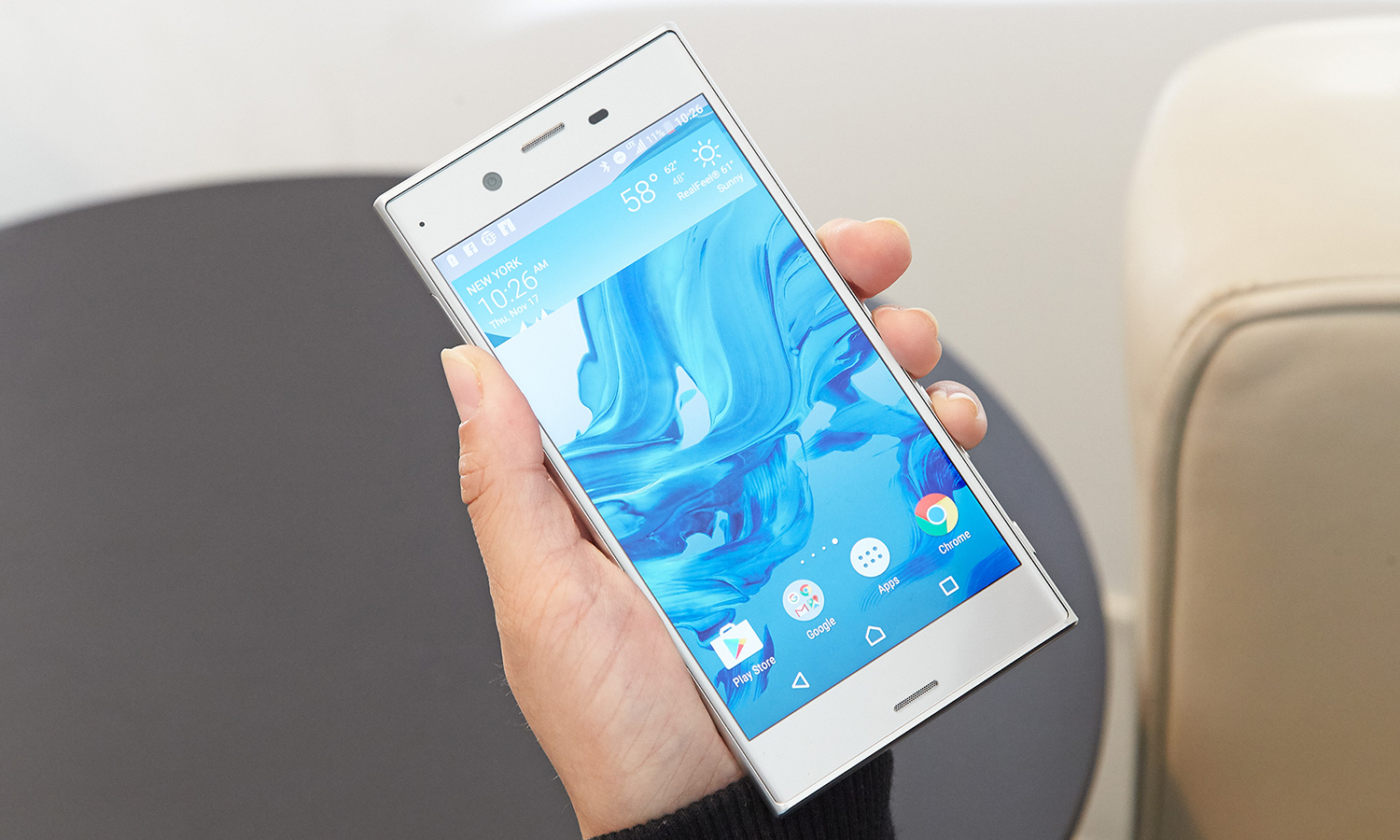Tom's Guide Verdict
The Sony Xperia XZ has a beautiful display, better-than-average battery life and effective image stabilization, but it doesn't live up to the company's promise of a smartphone camera that produces blur-free images.
Pros
- +
Bright display
- +
Comfortable grip
- +
Solid image stabilization on videos
- +
Impressive battery life
Cons
- -
Doesn't live up to blur-free promise
- -
Photos shot in daylight appear too bright
- -
Distorted color in low-light shots
Why you can trust Tom's Guide
Boasting 5-axis image stabilization along with a 23-megapixel rear camera capable of capturing 4K video, Sony’s $699 Xperia XZ clearly hopes to unseat the Galaxy S7 Edge and the iPhone 7 Plus as the camera phone champ. However, while Sony’s 5.2-inch phone certainly looks sharp and is easy to handle, the camera on the Xperia XZ doesn’t quite live up to what Sony promises, particularly when compared to our favorite camera phones.
MORE: iPhone 7 and iPhone 7 Plus Review: Great Upgrades, But One is ...
Design
Sony’s Xperia line gets knocked for its boxy look, but I found the Xperia XZ to be comfortable and handsome. Its square-ish design felt more secure in my hands than phones with more rounded edges. Measuring 5.75 inches x 2.83 x 0.32, the XZ is slightly smaller but thicker than the S7 Edge and larger than the iPhone 7. The 5.68-ounce XZ is only slightly heavier than both those phones. The XZ can also withstand splashes and rain showers.
The phone comes with 32GB of storage, and you can add up to 256GB via a microSD card inserted into the same slot your SIM card goes into. I particularly liked that the SIM card slot doesn’t require a tool to open, just a fingernail.
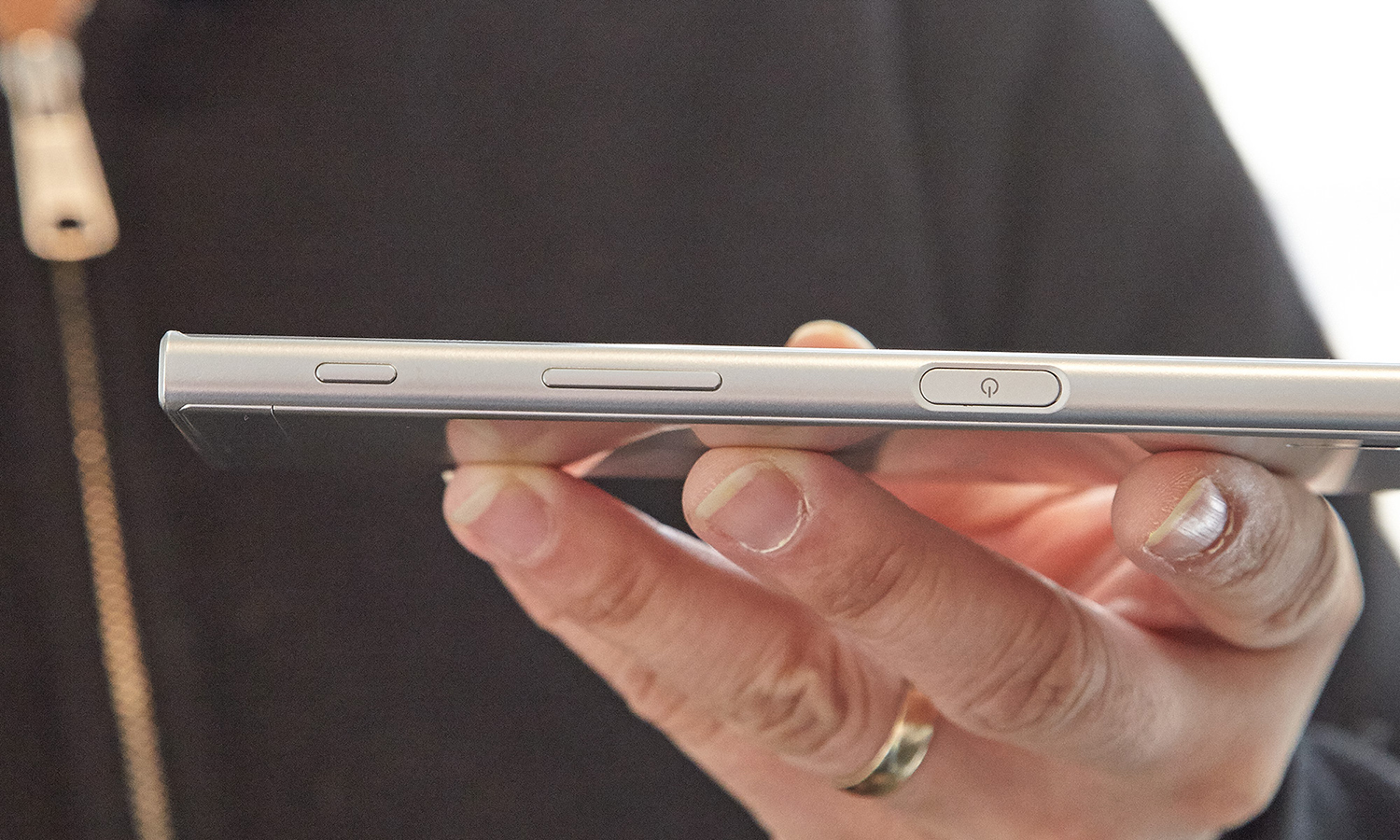
We reviewed a Platinum Xperia XZ, but the phone also comes in a much more attractive Forest Blue as well as Mineral Black.
Display and Sound
The Xperia XZ sports a Triluminous display, similar to what you'd find in Sony’s Bravia TVs. That technology is supposed to show a wider range of colors for a richer, more vibrant screen, and it’s something I noticed when watching video on the XZ’s 5.2-inch display.
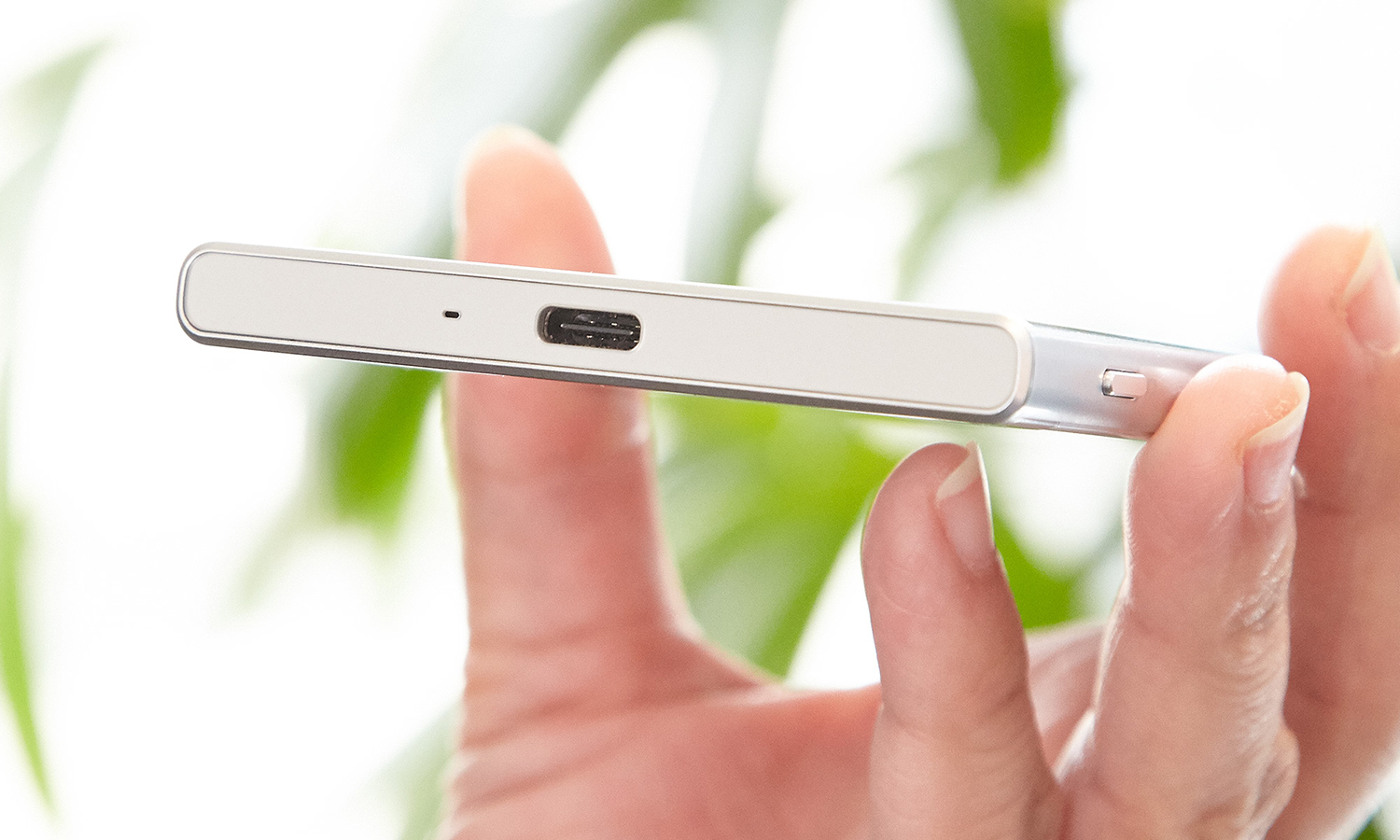
The XZ’s screen shows off 165.6 percent of the sRGB color gamut, making for a colorful display. Those colors aren’t as accurate as they could be, though: The XZ got a Delta-E rating of 3.3, compared to the S7 Edge’s rating of 2.9. (Numbers closer to zero are better.) When I streamed an episode of Daredevil from Netflix to the phone, deep blood red covered actor Jon Bernthal's face, while the blue, yellow and green lights dotting the city skyline really popped.
You might expect the XZ’s camera to reveal small details sharply, but it failed to do as well as the Galaxy S7 in challenging conditions.
Using a light meter in our lab to measure screen brightness, the XZ's screen registered 509 nits. That’s ahead of the 431-nit average for smartphones, though not quite as bright as the Galaxy S7 Edge and its 530-nit result.
Sony claims that the XZ has front-facing speakers that offer immersive 3D stereo sound quality. But the speakers didn't impress any more than an S7 Edge or even the older HTC M9 that I use every day.
Camera
As with the Xperia X Compact, Sony says the XZ can capture motion shots without any blur in any lighting conditions, thanks to an Exmor RS image sensor that focuses on fast-moving subjects, as well as color and distance sensors.
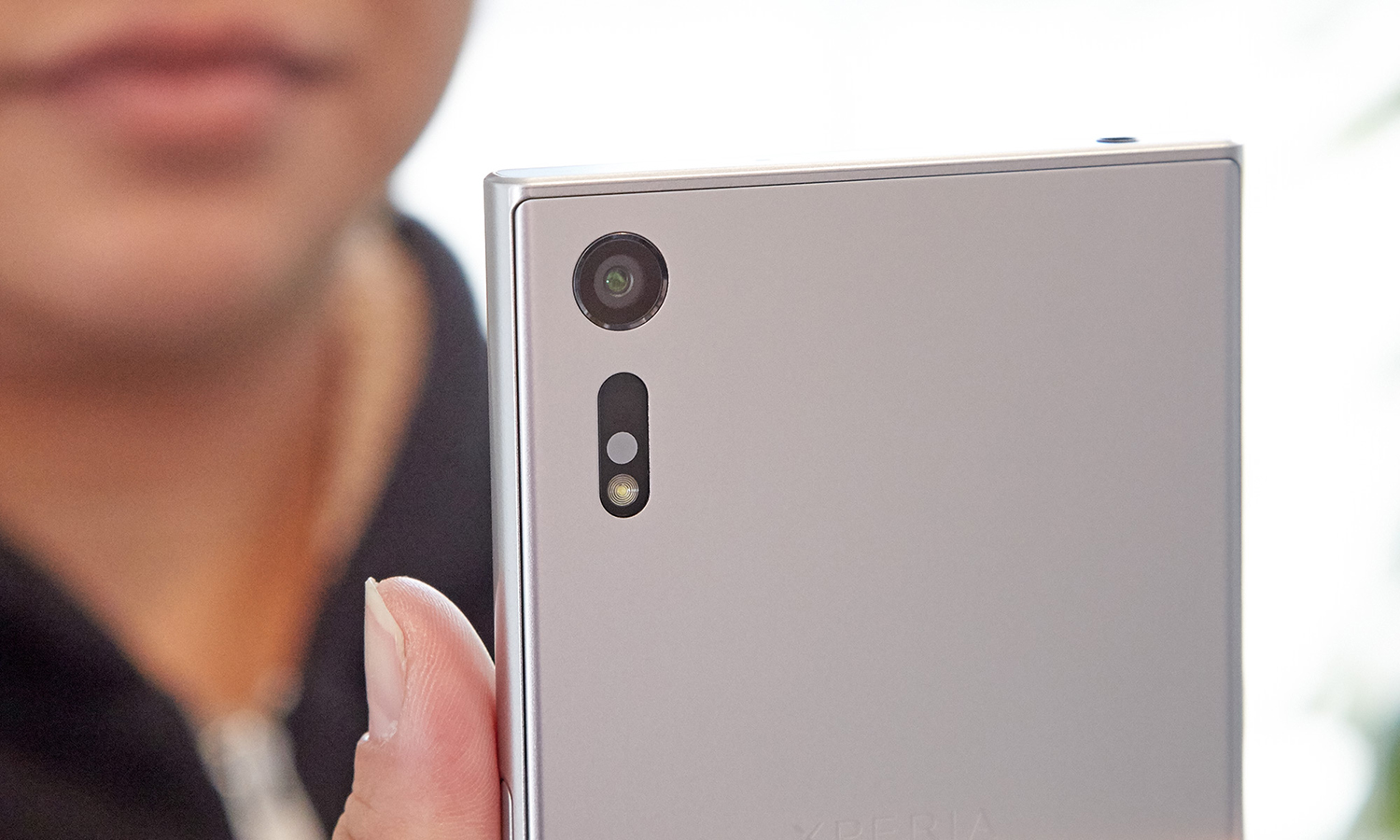
We compared the 23-megapixel Xperia XZ camera with the 12-MP camera on the Galaxy S7 Edge. While you might expect the XZ to reveal small details sharply, it failed to do as well as the Galaxy S7 in challenging conditions.
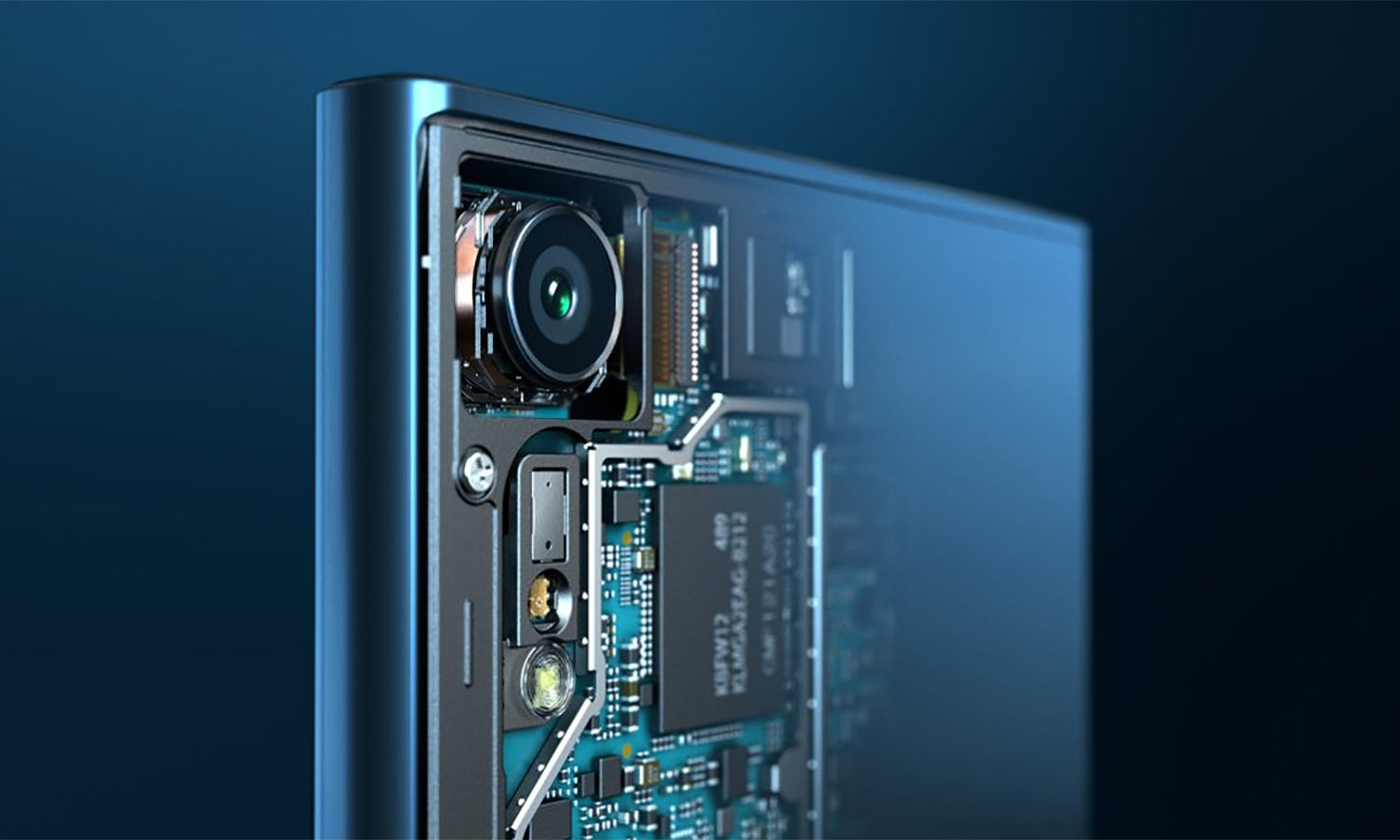
In low light, shots taken with the XZ appeared grainier and colors were distorted compared with real life. For instance, a nighttime shot of an old Brooklyn apartment building door taken with the XZ looked greener than it actually was. The texture of the door was softened and peeling paint at the bottom of the door showed up as white splotches. You can see those details better in the S7 Edge’s shot.
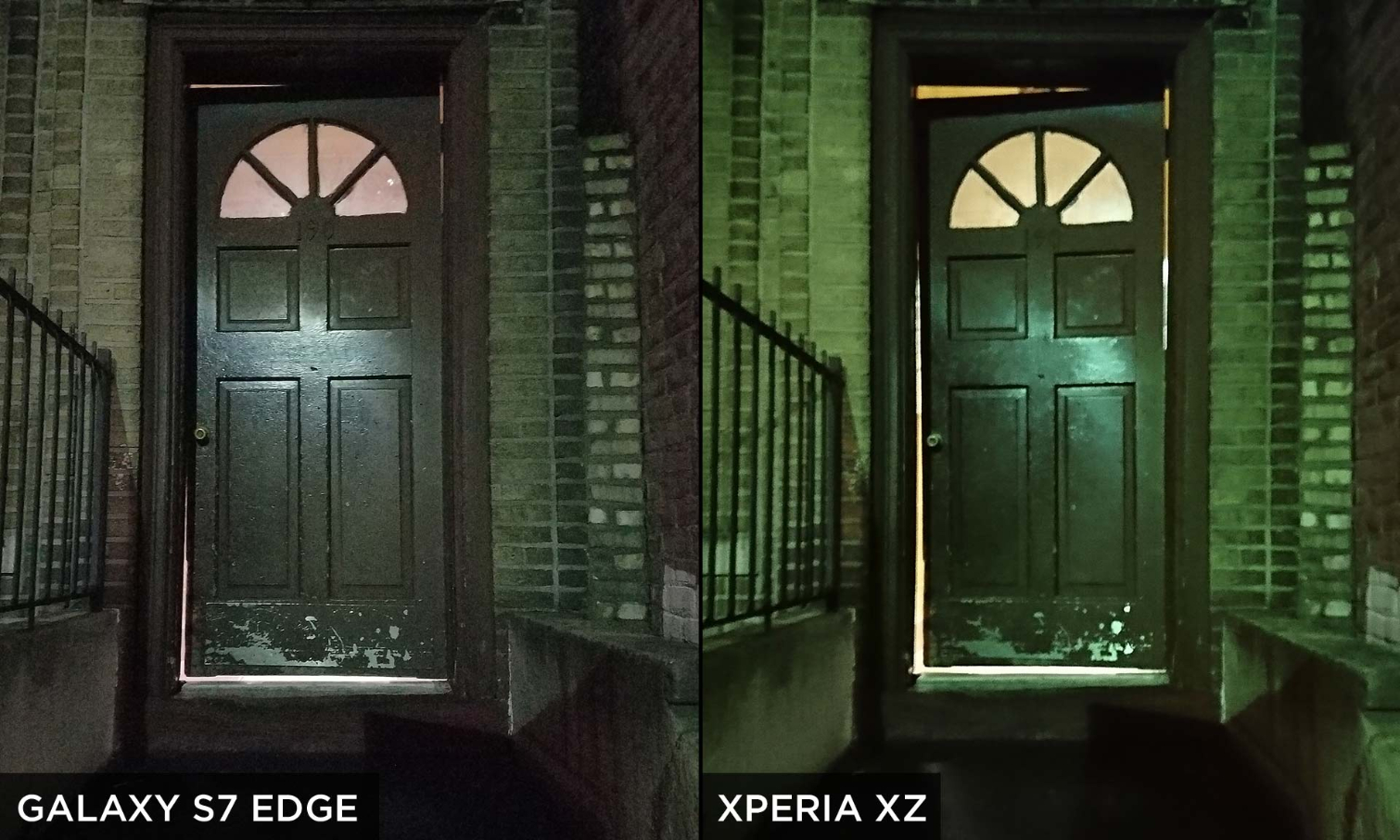
A nighttime shot of colorful graffiti on the side a truck looked more vibrant than real life with the XZ, refuting Sony's claims of color accuracy, although we did see much better color accuracy in daylight.
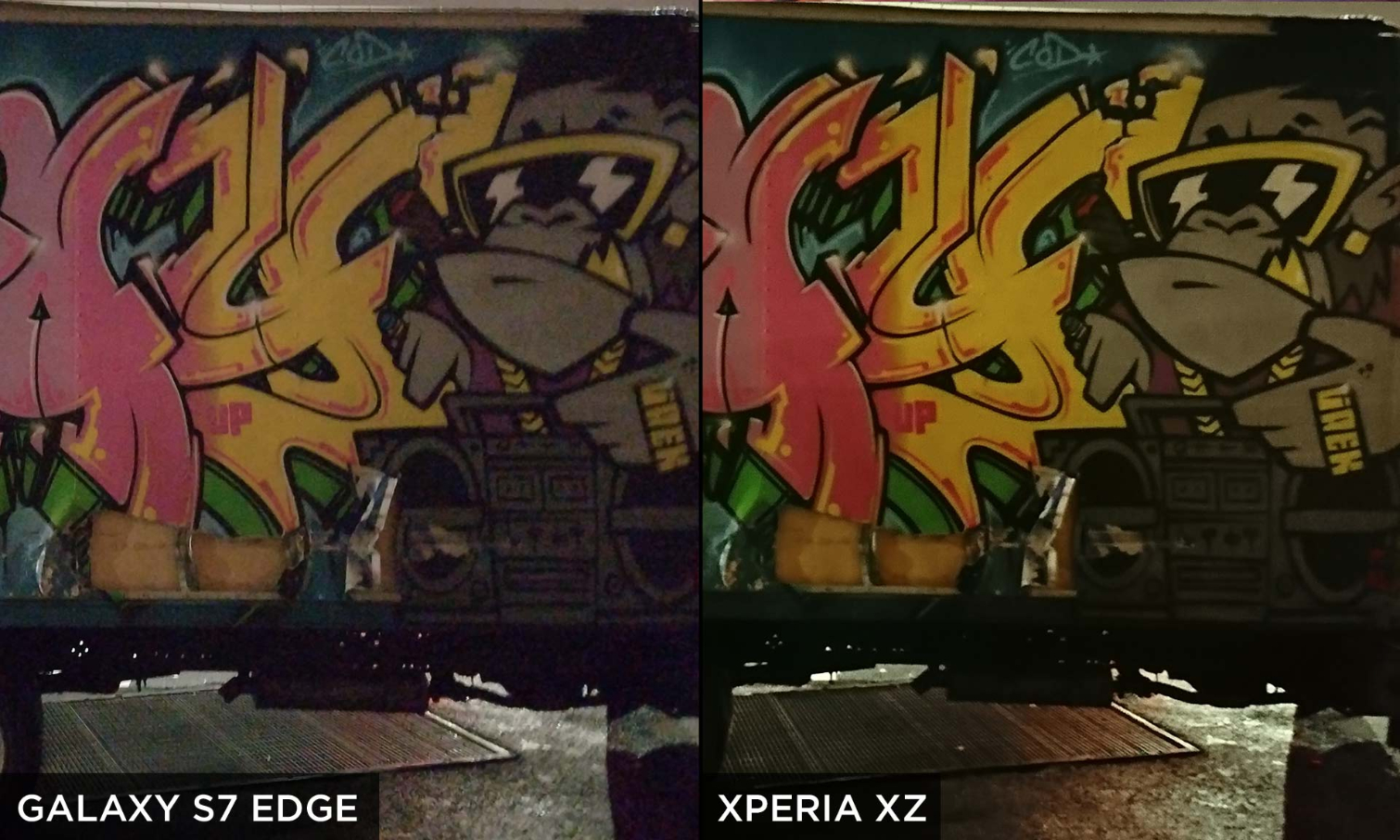
Shots of subjects in motion did not appear like a still moment, as if time had stopped, as we'd hoped they would with the benefit of Sony's Predictive Hybrid Autofocus feature. There was still motion blur on a cab whizzing down 5th Avenue, like wind traveling over the windshield. Still, the S7 Edge produced a shot with more blur, so perhaps the camera on Sony’s phone does deserve some credit for its ability to handle action shots.
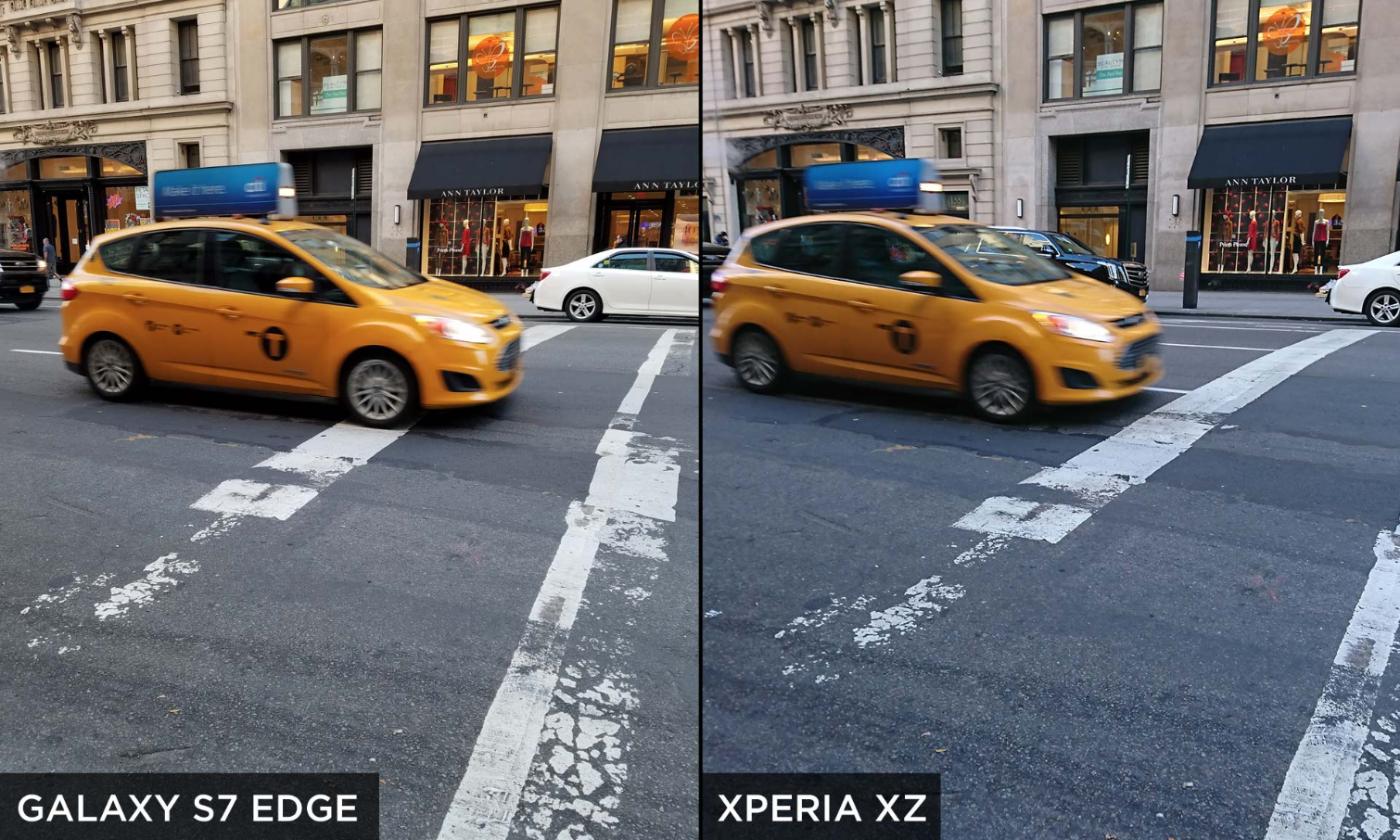
Pictures taken in the shade appeared darker with the XZ than they actually were, while some shots taken in daylight were far too bright, often blown out. In a shot looking down a Brooklyn sidewalk using the XZ, shadows from an apartment building appeared too gloomy; that same shot looked more realistic when taken by the S7 Edge.
Since the XZ generally darkened shadows in photos I took with the phone, textures on nearby tree branches weren’t as visible as they appeared in the S7 shot. The XZ handled color a little more accurately in that shot, though, as painted fire escapes appeared a more vibrant red.
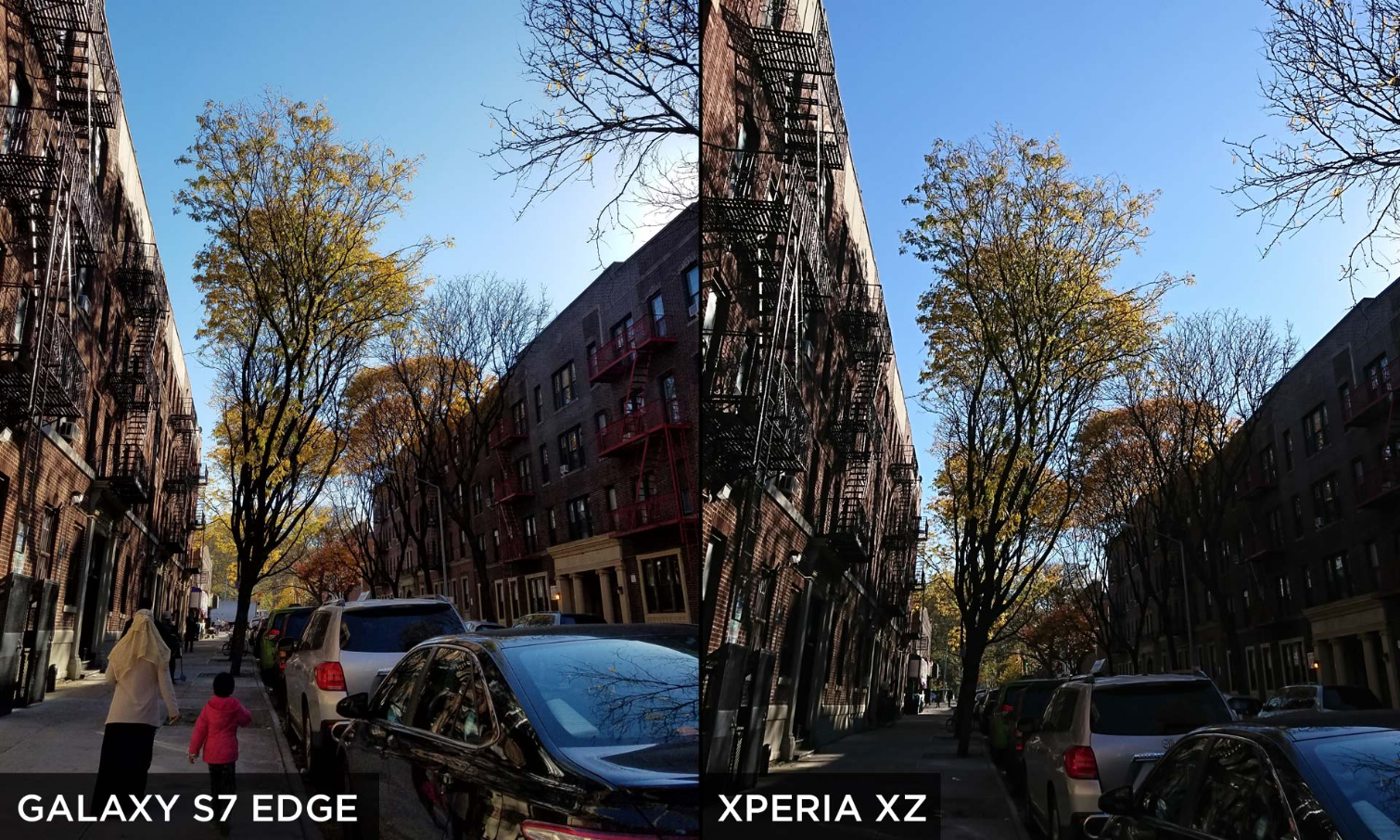
If you love posting food pictures to social media sites, the S7 Edge topped the Xperia XZ when it put both cameras to the test photographing food. A close-up of a bowl of grapes and blueberries taken with the Xperia XZ didn’t look as sharp as the S7 Edge, which also showed off more detail and texture in its photo.
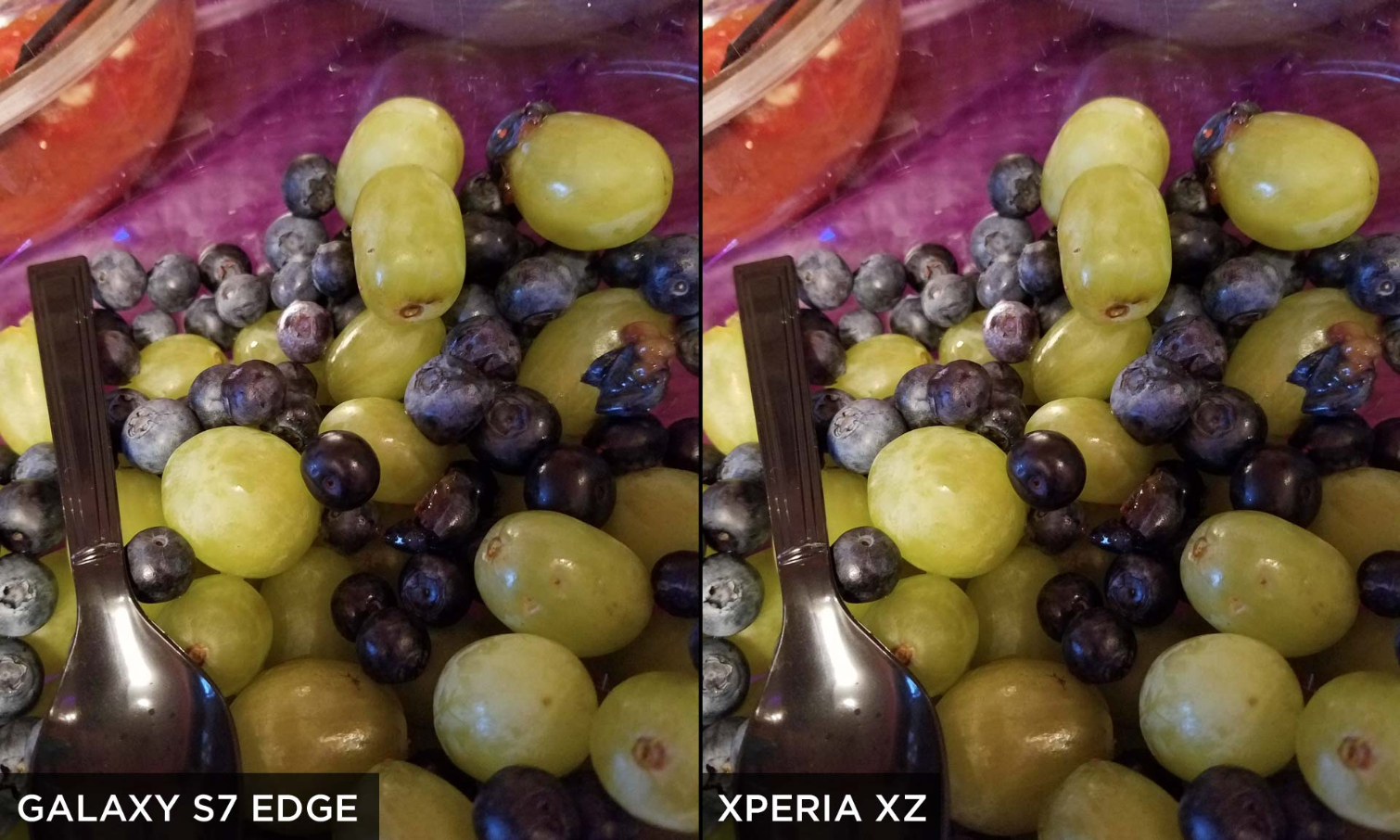
The XZ also features a 13-MP selfie camera that Sony says performs well in low light. But I found the same low-light problem I saw with the phone's rear camera. A shot with the front-facing camera at dusk turned out looking yellow.
Video is where the XZ really shines. The Xperia XZ comes with a five-axis image stabilization system, a first for any smartphone. When shooting video while walking down a sidewalk, I was impressed by how well the XZ appeared to smooth out my jarring footsteps, especially compared to the S7 Edge and its optical image stabilization.
While the average household may not be equipped to adequately view it, the XZ records video in 4k, or ultra-high definition, as does the Galaxy S7.
Performance
Qualcomm’s high-end Snapdragon 820 powers the Xperia XZ, which runs Android Marshmallow. I found the XZ responsive and snappy when browsing and using a variety of apps, including Google Chrome, Facebook and Netflix.
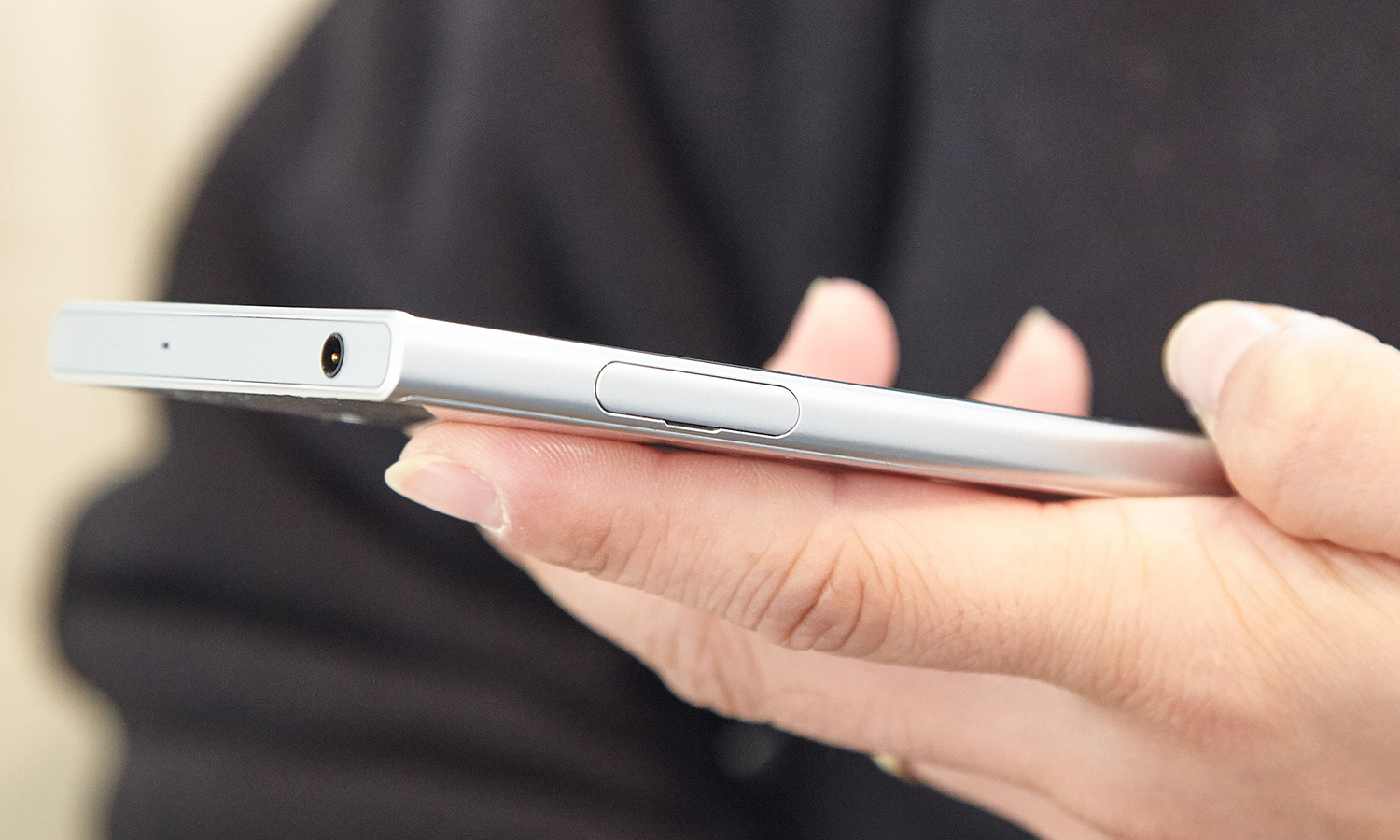
In Geekbench 4, which measures overall performance, the Xperia XZ scored 3,241, close to the average smartphone's score of 3,281, but still well behind the Galaxy S7 Edge’s 4,035 mark. (The S7 Edge ships with 4GB of RAM to the 3GB in the Xperia XZ.)
The Xperia XZ fared better in graphics testing, scoring a 30,167 in 3DMark’s Ice Storm Unlimited test. That’s nearly double the score tallied by the average smartphone (16,478), and it’s better than S7 Edge (29,851), too.
Battery
In our battery testing, which involves continuous web surfing over T-Mobile's LTE network with the display’s brightness set to 150 nits, the Xperia XZ's 2,900 mAh battery lasted 10 hours and 18 minutes, slightly higher than the 10:09 you'd get from an S7 Edge and better than the 9:19 smartphone average. You can expect a full work day of endurance from Sony’s phone.
Sony says its USB Type-C adaptive charging system slows down charging before the phone hits the 100-percent mark. This approach could improve the lifespan of the XZ's battery, since leaving a phone on a charger for too long can damage battery life over time.
Bottom Line
The Sony Xperia XZ is a handsome choice that's comfortable to hold, and we like the vibrant screen and impressive 10-plus hour battery life. Given the phone’s $699 price tag, though, it’s hard to recommend the XZ over either Samsung’s Galaxy S7 ($669) or the more expensive S7 Edge ($769). Both S7 models sport the same camera that outperformed the XZ in our testing, so we think you’ll get better photos with either Samsung phone.
Still, if shooting video is more your thing, the Xperia XZ’s 5-axis image stabilization makes it a more compelling option.
Althea Chang is Associate Director of Content Development for Consumer Reports and was previously a Senior Writer for Tom's Guide, covering mobile devices, health and fitness gadgets and car tech.
